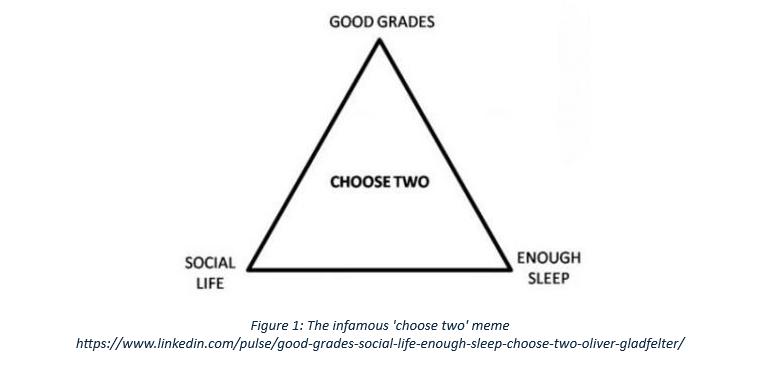
Why students need to understand opportunity cost
Opportunity cost is a versatile concept that can be applied to various stages of a student’s life.
During high school, students face decisions that balance academic and extracurricular activities. When choosing universities and majors, they need to prioritise between their preferences and their future goals. Finally, career choices involve considering the trade-offs between different aspects of their lives.
In simple terms, opportunity cost is the hidden cost of choosing one opportunity over another. Understanding that a perfectly Instagram-able life is not real and that everyone has to choose priorities is highly beneficial for students, especially at times when many struggle with self-esteem issues, anxiety disorders and overstimulation.
1. Balancing academic and extracurricular activities
In high school, students often juggle numerous responsibilities, from academic to extracurricular activities.
Here, opportunity cost manifests itself in the choices they make about how to spend their time. Should they focus more on academic activities that could enhance their college applications, or should they engage in extracurriculars that develop their interests and skills outside the classroom?

A practical way to understand this is through the infamous student-life triangle, with grades, sleep and social life at each point. Students often find themselves having to choose two out of the three. With only 24 hours in a day, they must prioritise academic work, maintaining healthy bodies (sleep and sports) and social lives (friends and extracurricular activities).
As counsellors, we can help students to recognise these trade-offs and encourage them to find a balance that aligns with their long-term goals.
2. Choosing universities and majors
When it comes to selecting a university and a course, the concept of opportunity cost becomes even more pronounced. No single university or course is a perfect fit for every student, so it’s essential to get priorities straight to find the best fit.
There are numerous ways to approach the best-fit conversation with students and their families, including weighing their priorities.
One aspect that I believe is commonly overlooked is the student’s career preference versus their preference for the subject they want to study. While some universities offer flexibility for students to pick a few courses from other majors, this is not always the case.
Most students graduate from high school at the age of 18 and finish their undergraduate studies aged 21 or 22. It is quite astonishing that we let students study subjects they like for four years without fully understanding the career prospects for the next 40 or 50 years.
Career days, in all their forms, are a key factor in choosing a course of study. In my opinion, we should be encouraging students to choose majors and universities that align with their long-term career goals, rather than their short-term preferences.
3. Careers: balancing life priorities
This brings us to another tough choice: careers. As students graduate, they are faced with more and more decisions.
As their counsellors, we are unlikely to have the same (or any) access to them by that stage. Educating them now on how to make career choices is therefore one of the most important things we can do for them.

Career choices involve understanding how life works from a holistic perspective, best represented in the wheel of life. The wheel is a coaching and mentoring exercise where the mentee fills in the time commitment and potential amount of effort they could give to various aspects of their life.
It is essential to understand that:
1. No one ever has or ever will have a full circle, as we all have the same 24 hours a day and our priorities differ.
2. These sections grow and shrink in different phases of a person’s life - when starting a new job, taking a postgraduate pause or having a baby, for example. Priorities shift continuously.
Students spend a considerable amount of time on the internet, where most people prefer to show their better moments and achievements. Raising students’ awareness of what these social media personalities might be sacrificing behind the scenes can help to temper expectations, relieve some societal pressure and, most importantly, strengthen their resilience and motivate consistency.
Guiding students through trade-offs
Opportunity cost can significantly affect students’ decision-making processes throughout their lives. Understanding and applying this concept can help students to make informed decisions that align with their long-term goals.
As counsellors, our role is to guide them through these trade-offs, helping them to balance their priorities and achieve well-rounded and fulfilling lives.
Link nội dung: https://diendanxaydung.net.vn/students-also-have-the-opportunity-a62539.html